Review: 'Making Shoji' by Toshio Odate
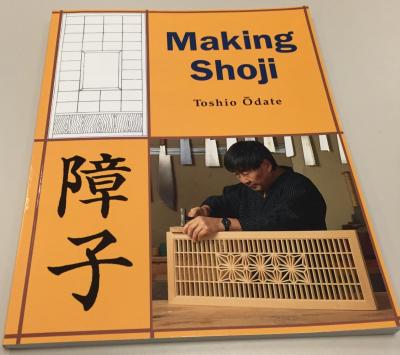 Book review -- 'Making Shoji' by Toshio Odate. Reviewed on 4/29/2016.
Book review -- 'Making Shoji' by Toshio Odate. Reviewed on 4/29/2016.
This is where I post my ideas about art, design, aesthetics, and applied aesthetics that pique my interest, such as architecture and kinetic art. In particular, I plan to rave about my favorites:
 Book review -- 'Making Shoji' by Toshio Odate. Reviewed on 4/29/2016.
Book review -- 'Making Shoji' by Toshio Odate. Reviewed on 4/29/2016.

 On Saturday, we took a high speed train over to Venice and had lunch. We returned to Florence that evening with enough time left to enjoy the best spaghetti and roast chicken meal I've ever tasted, and a wonderful bottle of Brunello di Montalicino in a little cafe a few blocks on the other side of the cathedral. On Sunday, we wandered the Uffizi Gallery. Adriana lingered in the Botticelli gallery, while I liked the sculpture. It's nice to see a famous painting in person, if for no other reason than to put it into scale and realize that it's a real work by a real human being. The Birth of Venus is nice, but I kind of preferred the Dyptich of "The Return of Judith to Bethulia". It's so wonderfully bloodthirsty and vibrant.
On Saturday, we took a high speed train over to Venice and had lunch. We returned to Florence that evening with enough time left to enjoy the best spaghetti and roast chicken meal I've ever tasted, and a wonderful bottle of Brunello di Montalicino in a little cafe a few blocks on the other side of the cathedral. On Sunday, we wandered the Uffizi Gallery. Adriana lingered in the Botticelli gallery, while I liked the sculpture. It's nice to see a famous painting in person, if for no other reason than to put it into scale and realize that it's a real work by a real human being. The Birth of Venus is nice, but I kind of preferred the Dyptich of "The Return of Judith to Bethulia". It's so wonderfully bloodthirsty and vibrant.
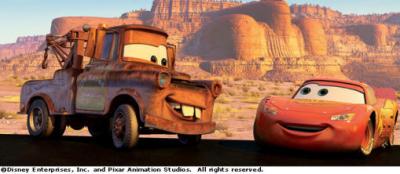 I don't write much here about movies. I'm not really sure why. I've been a devout fan of cinema for a long time, up to and including running the movie theater at my college while I was an undergrad. I took quite a few classes on film, including several with the respected film theorist and historian Louis Giannetti. I guess it's been because everyone and his brother has become an 'internet film reviewer' in the last two decades. So I usually stay out of it. But I'm still passionate about watching movies. And as my wife often somewhat bemusedly notes, while completly lacking any interest in this particular genre, I am a complete sucker for an animated film.
I don't write much here about movies. I'm not really sure why. I've been a devout fan of cinema for a long time, up to and including running the movie theater at my college while I was an undergrad. I took quite a few classes on film, including several with the respected film theorist and historian Louis Giannetti. I guess it's been because everyone and his brother has become an 'internet film reviewer' in the last two decades. So I usually stay out of it. But I'm still passionate about watching movies. And as my wife often somewhat bemusedly notes, while completly lacking any interest in this particular genre, I am a complete sucker for an animated film.
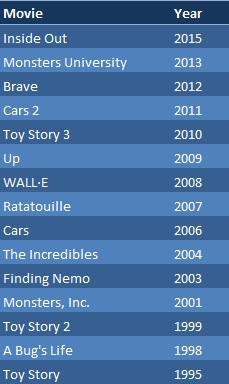
I mean, yes, I agree that their films are, in general, among the best ever made in animation. They've released 15 feature films in 20 years. And their consistent level of quality has been astonishing. But when people talk about Pixar movies, they never seem to quite think the same ones that I do are truly the greats. It's disconcerting at times. I mean, why wouldn't everyone agree with my opinion. I'm just so . . . correct. Sigh. You are all very clearly confused.

 I ran across this image today, from David Getts. The image is his and I'm using it out of Fair Use to discuss the concept.
I ran across this image today, from David Getts. The image is his and I'm using it out of Fair Use to discuss the concept.
I suppose it's important to separate the photo from the design. The photo, or I suppose I should more properly call it a render, is dramatic in composition, lighting and setting. The image itself is a great image. But what of the design?
I'm not one to eschew whimsy or the breaking of conventions in design. In fact, I love such things in general. Such things, after all, are why I love the Muppets and the work of Antoni Gaudi and Frank Gehri. But as the son of a dairy farmer, my eye always runs up against something else . . . does it make sense in the real world? Will it work if I had to use it?
This is a case where I suspect the design has overwhelmed the reason for the building. By calling it a home, the designer short circuits a case where it might be practical . . . as an office or museum. But as a home, the design suffers from a couple of crippling practical flaws. The key to this design, the negative space between the ground and the structure, means that it would either be a) cold or b) incredibly energy inefficient. The biggest passive tool for energy efficiency is to use the thermal load of the ground to even out the temperature in a structure. But this home is insulated from the ground. And there is nothing to stop heat loss from all of that surrounding glass. Which brings up the second issue.
 I have historically been a voracious reader, particularly of novels. But as I've reached my late 40s with young children in the house, I've found that I have little time, or more importantly, mental bandwidth, to read much. What I do read is usually in a very narrow bandwidth of trusted authors and easy-to-digest styles. Until he died, I read Robert Parker's mystery novels. Until the series ended, I read JK Rowling's Harry Potter books. The last trusted source I have right now is LE Modesitt's fantasy fiction. I read it because, a) it's escapist, but b) it's also grown-up fiction. It's fantasy with the concerns and knowledge of a person who has dealt with real world power struggles and real-world politics. I've taken lessons from many of his books on how to operate in a modern corporation, and how to interpret what's actually going on in the divisive politics of 21st century America.
I have historically been a voracious reader, particularly of novels. But as I've reached my late 40s with young children in the house, I've found that I have little time, or more importantly, mental bandwidth, to read much. What I do read is usually in a very narrow bandwidth of trusted authors and easy-to-digest styles. Until he died, I read Robert Parker's mystery novels. Until the series ended, I read JK Rowling's Harry Potter books. The last trusted source I have right now is LE Modesitt's fantasy fiction. I read it because, a) it's escapist, but b) it's also grown-up fiction. It's fantasy with the concerns and knowledge of a person who has dealt with real world power struggles and real-world politics. I've taken lessons from many of his books on how to operate in a modern corporation, and how to interpret what's actually going on in the divisive politics of 21st century America.
I also occasionally stop by Mr. Modesitt's own personal blog from time to time to see if he's published a take on current events. His is certainly not the only voice I read about such things, but it's a known voice and I often agree with his thinking. Or it makes me think a bit differently about it. Recently, he wrote about a dance recital that he and his wife attended, and at which he was given a poetry magazine. His take on both the dance and the poetry is that both forms have gotten looser over the past 50 years, and it hasn't been good for either. I don't disagree.
This started me thinking.
Well, in the last couple of days we've seen the departure of the 2014 Winter Olympics in Sochi and of the comedian, writer, and director Harold Ramis. As a forty-something man of a certain disposition, I of course often find myself lately ruminating on the way things go away. Loss is part of life. Death and departure is just change and change is the way of the cosmos. But these two doors closing highlight that loss is relative. And when things go away, it isn't always a loss. Not always. Harold Ramis was a wonderful writer and performer, responsible for some of my own moments of purest joy in this life. The laughter I received from him thanks to his writing on Animal House, Groundhog Day, and Caddyshack, and his performances in Stripes and Ghostbusters, is a gift for which I will forever be grateful. I just got his humor. Plus, we basically have the same hair, so I identified with him more than say Bill Murray or Dan Aykroyd. I didn't realize he was in such discomfort during the past couple of years. I'm truly sorry to hear that he suffered so. But I'm still sorry to hear that we've lost him. His loss was a loss for us.
Harold Ramis was a wonderful writer and performer, responsible for some of my own moments of purest joy in this life. The laughter I received from him thanks to his writing on Animal House, Groundhog Day, and Caddyshack, and his performances in Stripes and Ghostbusters, is a gift for which I will forever be grateful. I just got his humor. Plus, we basically have the same hair, so I identified with him more than say Bill Murray or Dan Aykroyd. I didn't realize he was in such discomfort during the past couple of years. I'm truly sorry to hear that he suffered so. But I'm still sorry to hear that we've lost him. His loss was a loss for us. Sochi, and the Olympics in general, is something we are well rid of. The overt commercialization. The local and systemic graft associated. The somehow unhealthy regimented nationalism that is promoted. The modern Olympics have lived way past their healthy usefulness. Originally, they were a tool for building international fellowship and clean, healthy sportsmanship. I remember the idealism of Jim McKay and the olympics of the 60s and 70s. I don't begrudge Russia their time in the spotlight. I just think we need to scale back the whole thing next time. But it is virtually guaranteed that we won't do that. I'm sure the next Olympics will be even bigger, even more obnoxious, even more authoritarian and autocratic than this time, because each time the commercial forces are more in line with the local dictators to do it that way.
Sochi, and the Olympics in general, is something we are well rid of. The overt commercialization. The local and systemic graft associated. The somehow unhealthy regimented nationalism that is promoted. The modern Olympics have lived way past their healthy usefulness. Originally, they were a tool for building international fellowship and clean, healthy sportsmanship. I remember the idealism of Jim McKay and the olympics of the 60s and 70s. I don't begrudge Russia their time in the spotlight. I just think we need to scale back the whole thing next time. But it is virtually guaranteed that we won't do that. I'm sure the next Olympics will be even bigger, even more obnoxious, even more authoritarian and autocratic than this time, because each time the commercial forces are more in line with the local dictators to do it that way.
So Harold Ramis left us too soon, but at least it was a natural departure, and probably a release. I'm glad he was among us for as long as he could stay and I wish him well in whatever awaits us all in the time after death. The Sochi Olympics, on the other hand, lasted about two weeks longer than they should have, overstaying their welcome from the moment they were born. It's not Sochi so much as the entire Olympic movement I lament. Sochi is gone, and good riddance. Can we now tell the Olympics themselves to go away? We'll honor them for the work they did in the 20th century, but frankly, I don't think we can afford them anymore, either financially or emotionally.
Stripes (1981) -- Recruiter: Now, are either of you homosexuals? |

This photo was from a couple weeks back, but I still wanted to post it. This was an evening between our two rare snow storms here in Atlanta. A couple days after the first one that turned the evening commute into a driver stranding nightmare all over the city, we had a brief one day warm up. That evening, I saw this gorgeous sliver of a moon setting in the clear skies over Roswell. My iPhone camera isn't great, but I felt compelled to capture the scene.
When I see a view like this, with the ball of the moon floating in the sky . . .clearly being a ball, it makes one feel very small, but also very connected. We spend so much of our lives living in two dimensions, I love these moments when I remember I'm part of a great big universe, and there's a giant ball floating in the sky above the giant ball of dirt I'm walking around on. With the moon backlit like this, I always think that even the ancients, or the primitive humans, or even the australopithicines, HAD to have looked up at this and realized, even if it was on some instinctive level, what the physical reality was of what they were seeing. We are so lucky to have our moon. And we are so lucky to live on such a gorgeous planet.
Let's try not to fuck it up by ruining the global climate. M'kay?
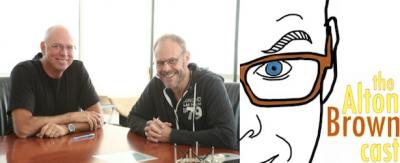 There was an interesting crossover to woodworking in the latest Alton Brown podcast. Yes, I like Alton Brown; he cooks, he's funny, and he's a geek. Don't give me any shit about it. I get enough on the topic from my wife. She can't stand him, for some reason. So the Alton Browncast is normally about cooking and food related items, but in the last couple of weeks, he's branched out to talk about other topics that interest him. Episode 18 has him doing a 90 minute long interview with the founder of Taylor Guitars, Bob Taylor. It's a fascinating and wide-ranging discussion; they talk about the start of the business, ways to market your work, the production process, and food and diet, among other things. (Bob has just recently become a vegan, for health reaons.)
There was an interesting crossover to woodworking in the latest Alton Brown podcast. Yes, I like Alton Brown; he cooks, he's funny, and he's a geek. Don't give me any shit about it. I get enough on the topic from my wife. She can't stand him, for some reason. So the Alton Browncast is normally about cooking and food related items, but in the last couple of weeks, he's branched out to talk about other topics that interest him. Episode 18 has him doing a 90 minute long interview with the founder of Taylor Guitars, Bob Taylor. It's a fascinating and wide-ranging discussion; they talk about the start of the business, ways to market your work, the production process, and food and diet, among other things. (Bob has just recently become a vegan, for health reaons.)
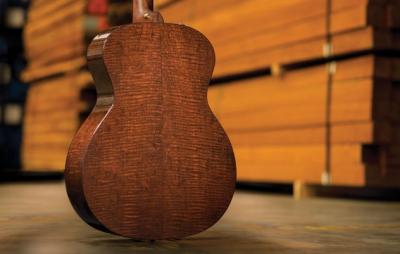 But from my perspective, the most interesting aspect of the interview came in the first half, from about the 20 minute to the 45 minute mark. Due to the recent legal difficulty at Gibson Guitars over improperly sourced exotic woods, it's clear that the entire industry has had to take a new look at their wood supplies. And it sounds as if Bob Taylor has done more than anyone to come up with a new way of suppling their factories with the woods they need. If anyone is doing yeoman's work at pointing us all in a new sustainability direction in this area, it sounds like Mr Taylor is at the forefront. It's an interesting listen to hear him talk, with passion and thoughtfulness, about travelling around the world to find the finest woods for his production; to Alaska for Sitka spruce, to three small mountain villages in Honduras for rosewood, and to Camaroon for ebony. It's the latter tale that has the most intrugue, and raised the biggest questions for me.
But from my perspective, the most interesting aspect of the interview came in the first half, from about the 20 minute to the 45 minute mark. Due to the recent legal difficulty at Gibson Guitars over improperly sourced exotic woods, it's clear that the entire industry has had to take a new look at their wood supplies. And it sounds as if Bob Taylor has done more than anyone to come up with a new way of suppling their factories with the woods they need. If anyone is doing yeoman's work at pointing us all in a new sustainability direction in this area, it sounds like Mr Taylor is at the forefront. It's an interesting listen to hear him talk, with passion and thoughtfulness, about travelling around the world to find the finest woods for his production; to Alaska for Sitka spruce, to three small mountain villages in Honduras for rosewood, and to Camaroon for ebony. It's the latter tale that has the most intrugue, and raised the biggest questions for me.
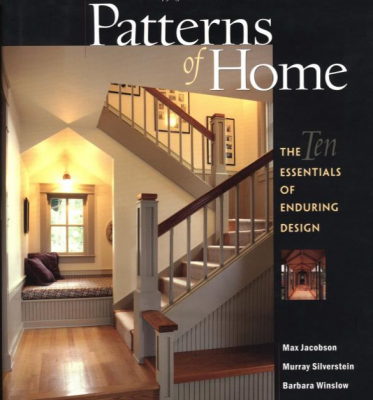 I've started reading "By Hand & Eye", the new book on furniture design by George Walker and Jim Tolpin, but I've not gotten more than a quarter of the way through it so far. When I finish it, I'll write up my reactions. But for now, my reaction is "Yes, I get it, proportions are important and you don't need a ruler."
I've started reading "By Hand & Eye", the new book on furniture design by George Walker and Jim Tolpin, but I've not gotten more than a quarter of the way through it so far. When I finish it, I'll write up my reactions. But for now, my reaction is "Yes, I get it, proportions are important and you don't need a ruler."
I've been thinking about the multi-faceted aspects of design lately, particularly as it pertains to architecture and object creation (i.e. furniture or small woodworking projects.) I've realized more and more in recent months that most of my perspective on what is good design and what isn't is related to a book that I bought and read about 10 years ago. It's called "Patterns of Home: The Ten Essentials of Enduring Design" and it's terrific. The ideas in that book have completely stuck with me and have deeply influenced many areas of creativity in my life.
So what is this book? "Patterns of Home: The Ten Essentials of Enduring Design" is by Max Jacobson, Murray Silverstein and Barbara Winslow, and is a condensed version of a much larger work from the 70s, a gigantic book called "A Pattern Language: Towns, Buildings, Construction". That earlier book, first published in 1977, is over a thousand pages in length and is legendary in the architecture world. I've never read the older book. I've only been exposed to the ideas through this later, more graphical Patterns of Home book.
On April 19th, 2013, Christopher Schwartz posted an important essay on his Lost Art Press blog called "On Technical Perfection". It asks the question of woodworkers, "Should we focus on being technically perfect, or should we instead focus on the design?" It's a natural topic for him, since Lost Arts is currently preparing a book about just this topic. The book is by George Walker and Jim Tolpin and will be called "By Hand and Eye". It sounds as if it has the potential to be a seminal work.
But even more impressive than the essay and the forthcoming book, is the discussion that follows his posting. What you can read there is a fascinating (and frankly, astonishing) discussion of the fundamental issues at play when it comes to the tradeoffs between technical prowess and design. Reading through this discussion seems to me to be a bit like sitting around in a room eavesdropping in about the year 1768 on a conversation between James Madison, Thomas Jefferson, John Adams, Benjamin Franklin, and John Locke about what it is about a government that would make it a better sort of government, one that would fulfill the ideals of the Enlightenment. We aren't in a new golden age of furniture design, but if things go the way they seem to be flowing, we may see one flower within the next few years. (I suppose it follows, since we've only recently seen a new golden age of tools and craftsmanship. It's a natural evolution of an Age for the leading lights to go from the questions of 'How do we do this?' to ones of "What then should we choose to do?")
 As I've seen similarly reported by many people this past week, the death of Roger Ebert hit harder than I expected it would, especially considering everyone knew that he hadn't been well in recent years. The outpouring of remembrances and testimonials is impressive, and most heartfelt, it seems to me. Since Roger was the consumate newspaperman, I've kind of made it a hobby of judging various journalistic organizations by how they handled this story. NBCnews.com and the New York Times did it with skill and care. CNN and CBS seemed a bit sloppier. I didn't even bother to read the NY Post, Washington Post, ABC News, and Fox News, which kind of says how far they've fallen (at least in my own estimation.)
As I've seen similarly reported by many people this past week, the death of Roger Ebert hit harder than I expected it would, especially considering everyone knew that he hadn't been well in recent years. The outpouring of remembrances and testimonials is impressive, and most heartfelt, it seems to me. Since Roger was the consumate newspaperman, I've kind of made it a hobby of judging various journalistic organizations by how they handled this story. NBCnews.com and the New York Times did it with skill and care. CNN and CBS seemed a bit sloppier. I didn't even bother to read the NY Post, Washington Post, ABC News, and Fox News, which kind of says how far they've fallen (at least in my own estimation.)
The personal writings about him have been even more impressive, as they can be on occasions such as this, since they don't need to hold to some journalistic standard when it was a friend and a colleague they lost. James Berardinelli, Andy Ihnatko, and Leonard Maltin, in particular, wrote very well about him. The loss was felt keenly by many. What sort of surprised me was that the loss was felt keenly, also, by me.
I've been meaning to try relief carving for a couple years now. I used Mike Henderson's vastly useful tutorials over at Mike's Woodwork. I decided to try to do the five petal flower, for a couple reasons. It seems easy enough for a first try, and the design has some personal significance to me.
 You know, I'm one of the few people who never bought the Star Wars movies on DVD. I don' t know, at the time they came out, I had seen them enough and didn't need to see them again.
You know, I'm one of the few people who never bought the Star Wars movies on DVD. I don' t know, at the time they came out, I had seen them enough and didn't need to see them again.
I'm a print design guy (and tech writer) by trade. And my urge in my woodworking (as a hobbyist) is to design pieces and build them . . . slowly, as it happens. But I find myself noticing a certain . . strange, mis-alignment between what woodworkers design and build these days, and what people put in their homes.
 Back in 2002, Adriana took a trip to the Netherlands and Italy with her parents. I wrote a poem, a sonnet, for her then and sent it to her in Italy. I just stumbled across it today. We're almost never separated these days, but the feeling remains.
Back in 2002, Adriana took a trip to the Netherlands and Italy with her parents. I wrote a poem, a sonnet, for her then and sent it to her in Italy. I just stumbled across it today. We're almost never separated these days, but the feeling remains.